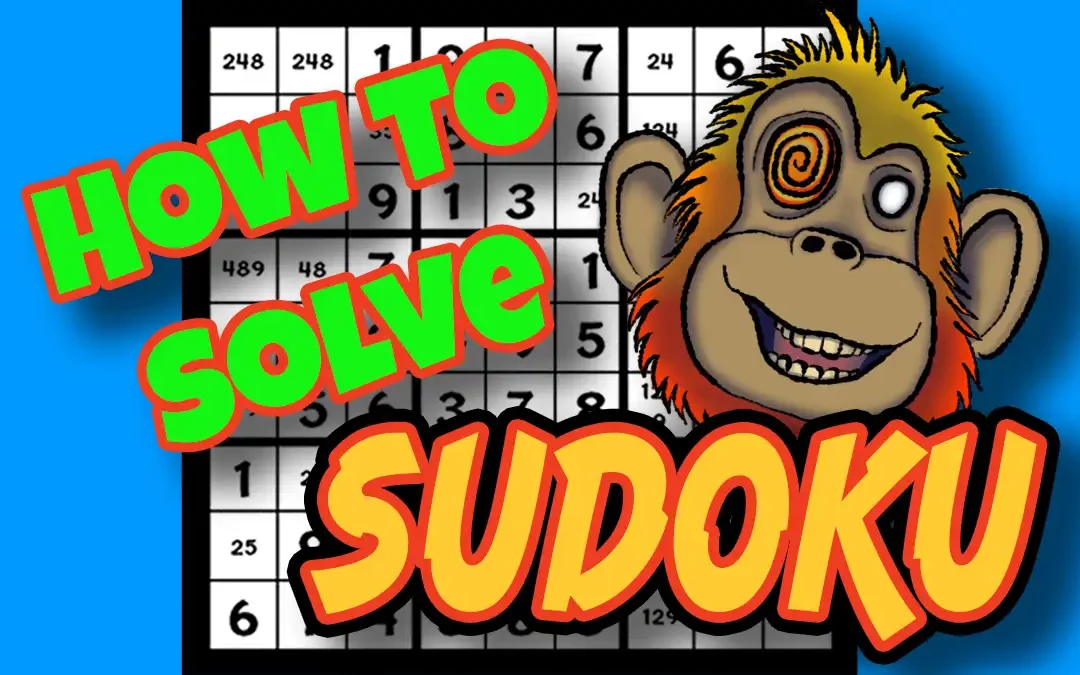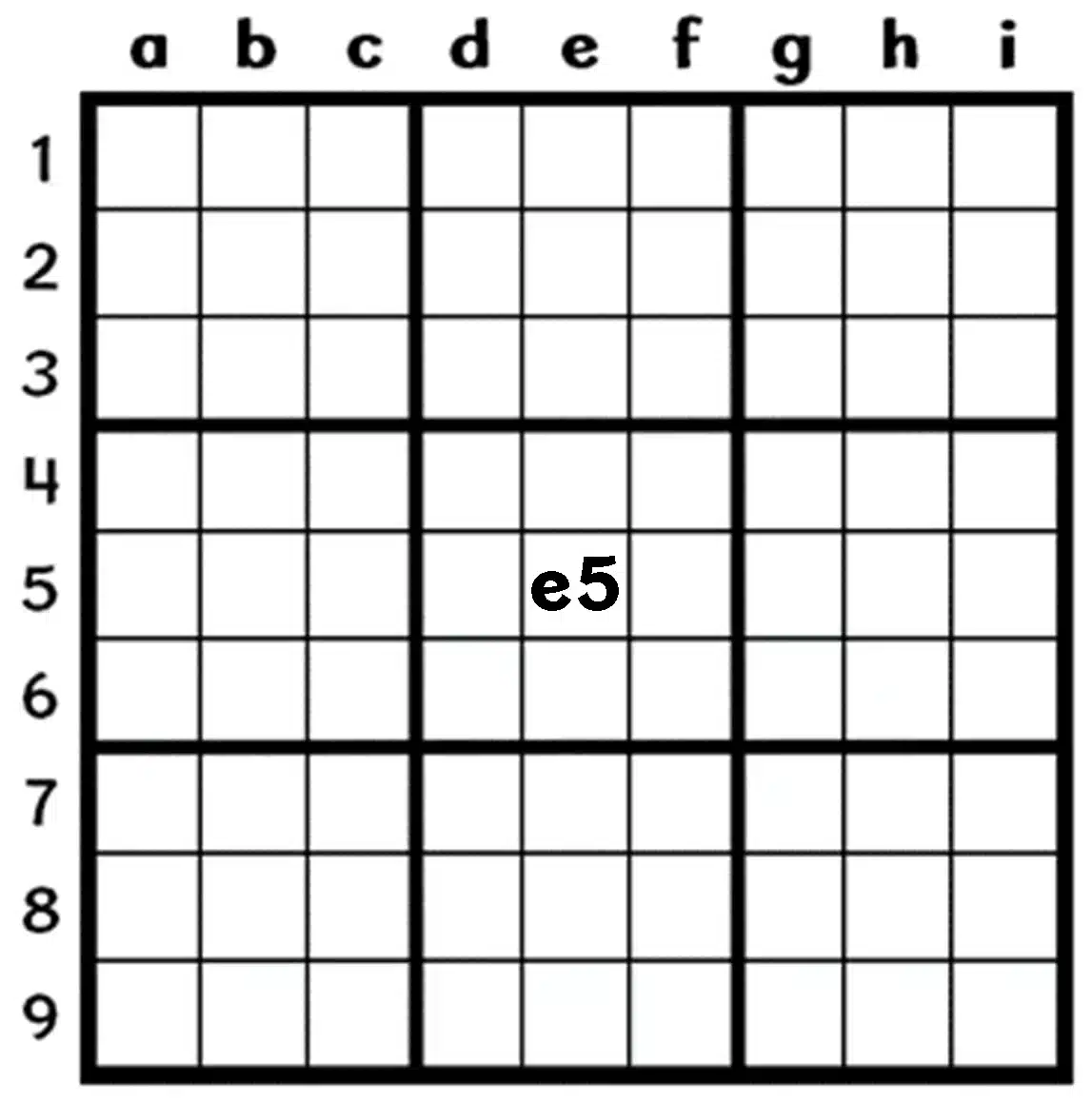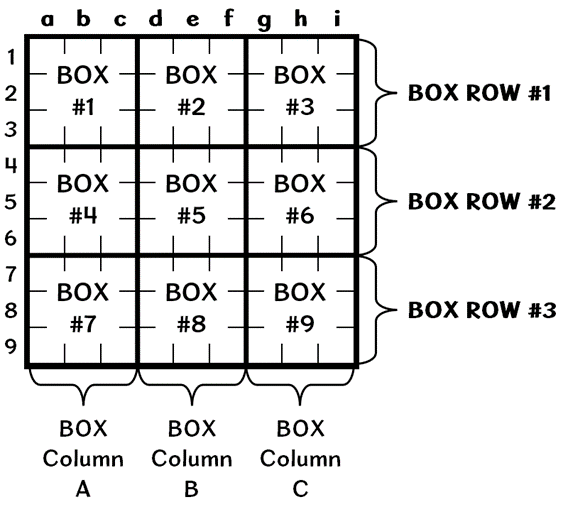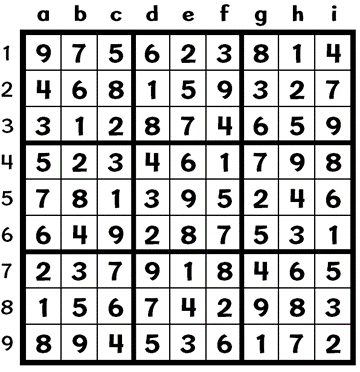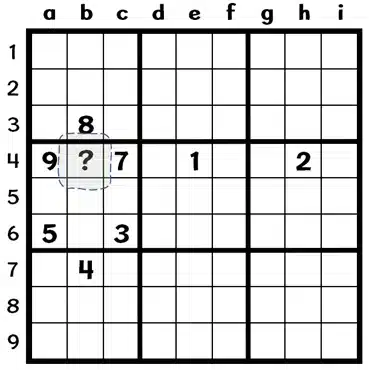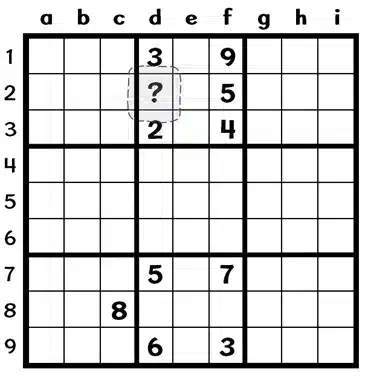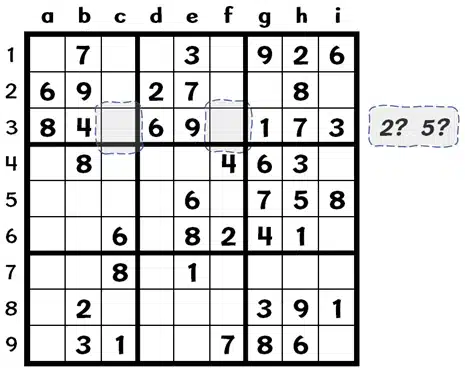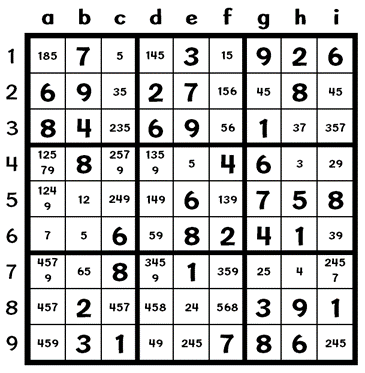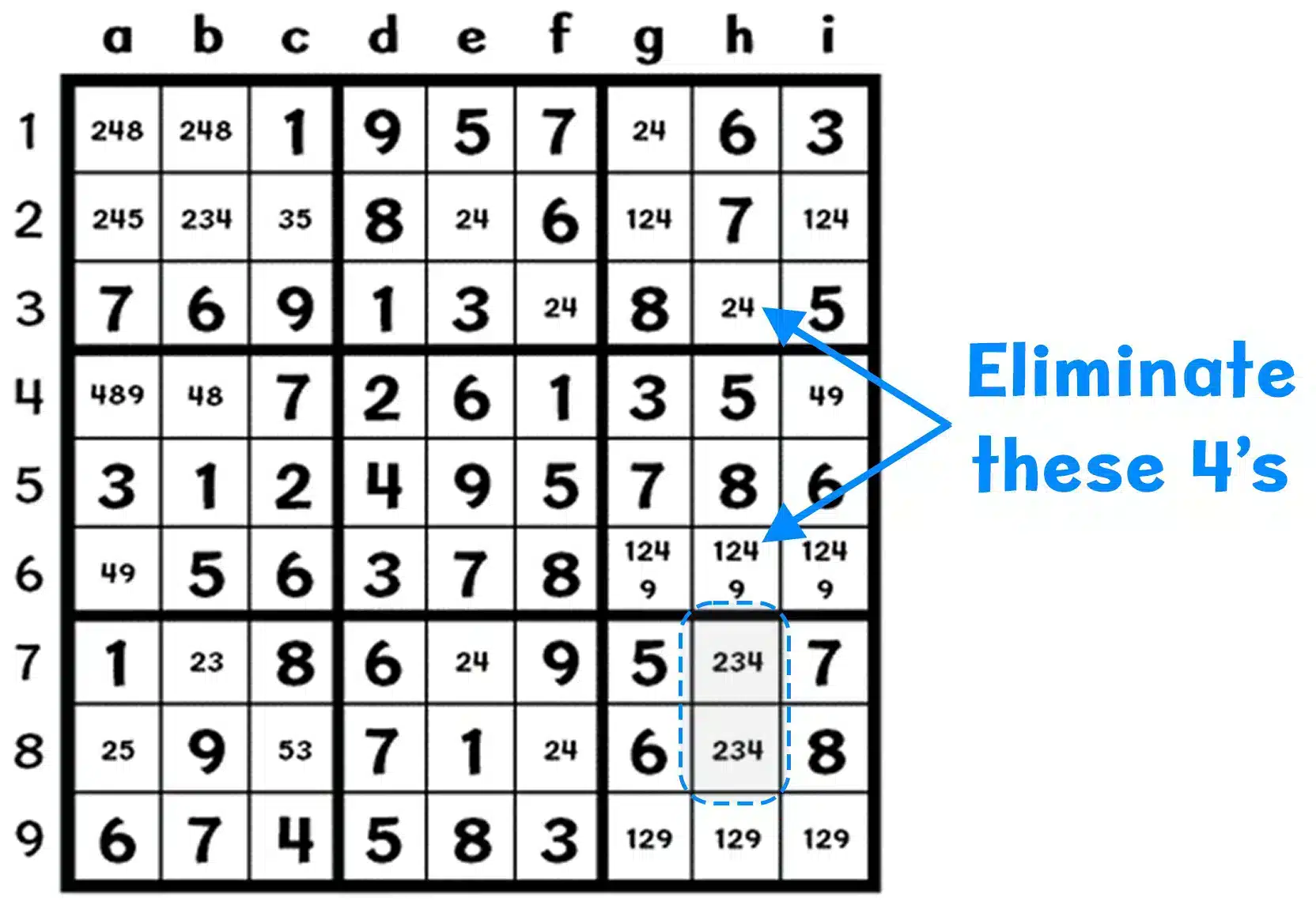Learning How To Solve Sudoku
In some ways, Sudoku can be thought of like playing a sport. In a sport, whether it’s basketball or Formula 1 racing, an athlete has to practice and practice and practice. All of the practicing leads to muscle memory.
That Formula 1 driver is moving at speeds in excess of 200 miles per hour. He may have as little as 1/10th of a second to see a situation developing and react correctly to avoid a crash.
But it’s not just reaction speed that the driver is relying on. Over years of practice the driver has fine tuned his muscle memory to such an extant that the mental reaction are tightly coupled to the physical reaction and almost no time is required by the driver to avoid a potentially lethal collision.
While Sudoku is not played at 200 miles per hour amongst a crowd of other drivers, my analogy (however awkward) is that the most high level sudoku player is a player that was a rank amateur when they first started out.
The best approach to learning sudoku (or anything else) is to get the fundamentals down pat. Then, fine tune and practice regularly. Over time, you not only learn how to solve sudoku, you will learn how do it quickly and to excel at sudoku.
Start off with the first few easiest techniques in this article. Do so by solving a few hundred easy and medium difficulty sudoku. Then progress to more sophisticated techniques over time. Learn how to solve sudoku from easy through to extreme difficulty levels one step at a time. Learn the advanced techniques one at a time and practice every day.
Table of Contents
How To Solve Sudoku – Basics First: The Rules
The first step to learning how to solve sudoku is to understand the rules.
Sudoku puzzles consist of 81 squares (Cells) arranged in a 9 x 9 grid. (See figure 1) The Columns of the sudoku grid are labeled as “a” through “i” while the Rows are labeled 1 through 9. In this way, we can refer to a specific Cell in the grid based on the intersection of the Column and Row labels. For example, the Cell located at the intersection of Column e and Row five would be called Cell e5.
Additionally, note that the grid is subdivided into nine 3×3 grids. (See figure 2) In this book, these sub-grids will be referred to as Boxes. Like the Cells, the Boxes are arranged in Rows and Columns. These will be referred to as Box Rows (1, 2, 3) and Box Columns (A,B,C).
Sudoku Figure 1
Save 10% On Unidragon.com Puzzles
Use the coupon code "FatMunkey" when you buy.
Sudoku Rules
The rules of sudoku are pretty simple:
- Every Cell must contain a single number.
- Only the numerals 1 through 9 may be used.
- Each of the 3 x 3 Boxes may only contain the numerals 1 through 9 one time – no repeats.
- Each Column may only contain the numerals 1 through 9 one time – no repeats.
- Each Row may only contain the numerals 1 through 9 one time – no repeats
Now that you know the rules, you can move on to learn how to solve sudoku.
Sudoku Figure 2
PuzzleMaster.com
Visit Puzzle Master for wood puzzles, wire puzzles, metal puzzles, brain teasers, and more!
Example Sudoku
To aid in learning how to solve sudoku, examples of a sudoku puzzle (Figure 3) and it’s solution (Figure 4) are shown below.
Sudoku Figure 3
Sudoku Figure 4
How To Solve Sudoku – The Difficulty Levels
In all of the FatMunkey’s books there are up to five progressive levels of difficulty. While learning how to solve sudoku, you will notice that there is no set standard for sudoku difficulty levels. These are mine. Other puzzle authors will have their own. As you become more practiced and accomplished at solving sudoku puzzles you will naturally move from easier to more and more difficult puzzles.
The five difficulty levels are:
- Easy
- Medium
- Hard
- Expert
- Extreme
See the front cover or the table of contents for which ones are in your book. Some will have all five difficulty levels while some will have one (or more) of the difficulty levels. Some books, like The Sudoku For The People Series, use “Brutal” instead of “Expert” and “Cruel” instead of “Extreme”.
The difficulty is determined in two ways. First, by the number of empty Cells. The more empty Cells there are, the more challenging the puzzle will be. But there is a limit to the number of empty cells in any given puzzle. Secondly, the puzzle difficulty is determined by the progressively more advanced solving techniques you will need in order to find the solutions.
OAs you learn how to solve sudoku, one of the most interesting aspects of sudoku puzzles is that, regardless of the difficulty level you are attempting to solve, any and all of the techniques, from the simplest to the most sophisticated, can and probably should be used.
That is to say, just because you’re working on an Extreme level puzzle, there is no reason why you should not use the most basic techniques in conjunction with the most sophisticate. To the contrary, use whatever it takes to find the solution!
Learning how to solve sudoku is incremental but, you can use every technique you learn to solve every puzzle.
How to Solve Sudoku – Guess or Not?
As you learn how to solve sudoku, you will discover that there are varying opinions in the world of sudoku as to the validity of guessing or trial and error as a strategy for solving a puzzle.
Some people consider these methods to be less desirable, while others say that guessing and trial and error are just another form of logical analysis that can or should be in the solver’s toolbox.
When developing the puzzles for the FatMunkey’s books, I made a conscious choice not to intentionally include puzzles that require trial and error as a technique.
However, I also do not agree with the folks who look on trial and error with disdain. To the contrary, I do agree that guessing is a valid logical tool. As a result, if a puzzle in the harder levels of difficulty happens to be so difficult that a player is tempted to think that the solving the sudoku requires guessing or trial and error techniques, I did not reject the puzzles based on that condition alone.
The bottom line is that for some puzzles, where you’ve hit a roadblock and you just can’t find a solution with the techniques discussed in this book, then, by all means, go ahead and GUESS.
You are learning techniques for how to solve sudoku. What’s the absolute WORST thing that can happen? The worst thing that can happen is NOT that you find your guess was wrong and you have to backtrack (use your eraser) and make another guess. No, to the absolute worst thing can happen is that you have to start completely over again. When you think about it that way, there really is no harm in guessing when you’ve exhausted all other possibilities.
Do world champion sudoku players guess? Nope. Probably never.
How to Solve Sudoku – Technique #1: Single Direction
This sudoku technique is the simplest and yet it is very effective for filling in the easiest blank cells. In fact, many of the easiest sudoku puzzles can be almost completely solved using this technique alone.
Pick any number and locate it in the sudoku grid. For this example, we will go with 6.
Referring to Figure 5, note that there are two sixes shaded in Box Row 1. Because Row 2 and Row 3 already contain a 6, we can determine the position of the 6 in Row 1. A six cannot be added to Boxes 1 and 2. But there is an empty cell in Row 1 of Box 3.
Because all other positions in Row 1 are excluded from containing a 6, Cell i1 is the only position where the 6 can be entered in Row 1.
Sudoku Figure 5
How to Solve Sudoku – Technique #2: Double Direction
Sudoku Technique #1 can be expanded to consider two directions.
Here, Figure 6 is the same puzzle as the one shown in Figure 5.
We need to now determine where the 6 will land in Box Row 2. We can immediately see that there is already a 6 in Box 4 and in Box 5. We can also see that there is no 6 in Box 6. The sixes in Row 5 and Row 6 mean that the 6 in Box 6 must be in Row 4.
However, this does not inform us which cell the 6 will go in since all three of the cells in Box 6, Row 4 are empty. We need to look in the other direction. Looking in Box Column 3, we can see that there is a 6 in both Column h and Column i.
This means that the 6 can only be placed in Cell G4.
Sudoku Figure 6
How to Solve Sudoku – Technique #3: Single Position
This sudoku technique is really quite simple.
Single position can be understood by studying the scenario presented in Figure 7.
All of the other numbers in the puzzle have been deleted to show the scenario more clearly.
The focus is to determine what number belongs in Cell b4. Looking in Box 4, the numbers 9, 7, 5 and 3 are eliminated. Looking in Column b the numbers 8 and 4 are eliminated.
Finally, looking in Row 4, the numbers 1 and 2 are eliminated. This leaves only the number 6 which can be place in Cell b4.
Sudoku Figure 7
How to Solve Sudoku – Technique #4: Elimination
This sudoku technique is slightly more advanced.
The scenario shown in Figure 8 demonstrates how elimination can be a powerful tool for finding a missing number in the sudoku grid when the right conditions exist.
Note that the number 8 in Row 8 implies that either Cell e7 or Cell e9 must contain the number 8.
Later, during the course of solving the puzzle we would undoubtedly determine which cell the 8 belongs to exactly.
For the moment, it does not matter because simply knowing that one of those two cells will contain an 8 we also know that, in Column e, an 8 can ONLY be located in Box 8 (inversely, an 8 cannot be in Box 2, Column e).
This then tells us, by elimination, that Cell d2 can ONLY contain an 8.
Sudoku Figure 8
How to Solve Sudoku – Technique #5: Missing Numbers
This sudoku technique is very handy when you have Rows or Columns in the sudoku grid which are nearly completed.
Look at Row 3 of Figure 9.
The number 2 and 5 are the only two remaining numbers which can be entered in the Row. Scanning down the Columns with the empty Cells in Row 3, we can see that Cell f6 contains a 2.
This means that Cell f3 cannot be a 2. Therefore, Cell c3 must be where the 2 goes. As a result, we know that Cell f3 will be where the 5 goes and the Row is then completed.
Sudoku Figure 9
Logical Analysis Techniques for Solving Harder Sudoku Puzzles
As I mentioned in the opening paragraphs of this article, practice makes muscle memory. As we learn how to solve sudoku, in order to get faster and more accurate at solving sudoku, we need to develop mental muscle memory when we want to learn how to solve sudoku.
Here is where I suggest that you grab a pile of sudoku puzzles and solve at least 100 to 200 easy to medium difficulty puzzles. That practice will really help. You will begin to notice certain things about the structure of the puzzles which is almost indefinable. Patterns will begin to be embedded in you brain. The puzzles will almost become effortless.
You can get a free printable book, or, even better, buy one of my printed sudoku books.
Then you can start using these more sophisticated techniques.
Up until this point, we have only looked at simple scanning techniques for solving sudoku puzzles. When working on Easy and even Medium difficulty sudoku these techniques may be all you need to completely solve the sudoku grid.
However, as you progress to more challenging difficulty levels, you will need to arm yourself with more sophisticated logical analysis types of sudoku solving techniques.
Some of the sudoku techniques that follow are actually fairly simple. For example, Sudoku Technique #6 is just about pencil marking. In and of itself, pencil marking may not show you the solution but, it is a tool which will aid you in using most other more advanced techniques.
Other techniques are not simple at all and the require some deep thought. Even more advanced sudoku techniques will require you to burn a lot of brain wattage identifying patterns, determining which techniques are appropriate to various situations, and then applying those techniques in a rigorous fashion to arrive at a sudoku solution.
For some people, learning how to solve sudoku with the more sophisticated techniques can be frustrating. like almost every pursuit in life, patience and practice are the keys.
As you encounter more and more challenging sudoku puzzles, use this page as a ready reference. Try to decide which techniques are appropriate to your particular sudoku puzzle, apply them and see if you got it right. With time and effort, you will master these sudoku analysis techniques and just know them by heart.
“Success consists of going from failure to failure without loss of enthusiasm.”
– Winston Churchill
How to Solve Sudoku – Technique #6: Pencil Marks
Take a look at Figure 10. All those smaller numbers are referred to as “pencil marks”. They are written smaller to allow for several numbers to be entered in a Cell but the reason for entering them is to note when a number is a candidate for the Cell but more information is needed to determine which of the candidates is the solution to the Cell. As Cells are completed, the pencil marks are erased. Note the Cells which have only one pencil mark. The solution to those Cells is the value of the pencil mark (if that value is not elsewhere in the Box, Row or Column) because no other numbers can be entered in that Cell.
Normally, entering all those pencil marks would be tedious and it would take a long time. The preference is generally to enter pencil marks sparingly. A good rule of thumb is to try not to enter more than two pencil marks for a given number in any one Cell or Box.
Sudoku Figure 10
How to Solve Sudoku – Technique #7: Candidate Elimination
Look at Column h of Figure 11.
Notice that in Box 9 there are only 2 Cells where the number 4 is a candidate and they are both in Column h. Because they are in the same Column and there is no other 4 in Box 9, we know that the 4 for Column h absolutely must be in Box 9.
This means we can eliminate all other 4 candidates in Column h. As a result, Cell h3 will be left with only a 2 as a candidate and we are certain that it is the only solution for that Cell.
Sudoku Figure 11
More How to Solve Sudoku Techniques Coming Soon!
Check Out FatMunkey’s Books
FatMunkey has a huge selection of sudoku and other puzzle books you are sure to enjoy.
Have look at this post to see all of the books and read about what FatMunkey has published so far.

